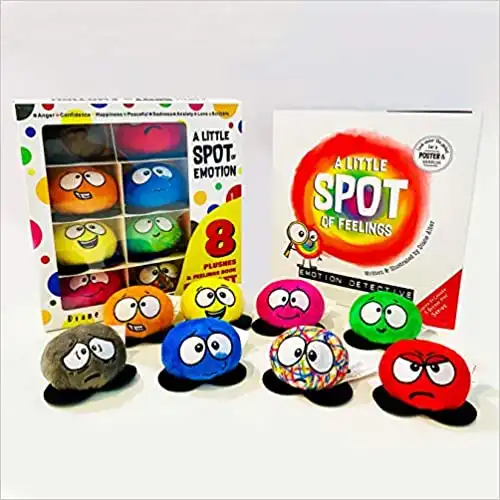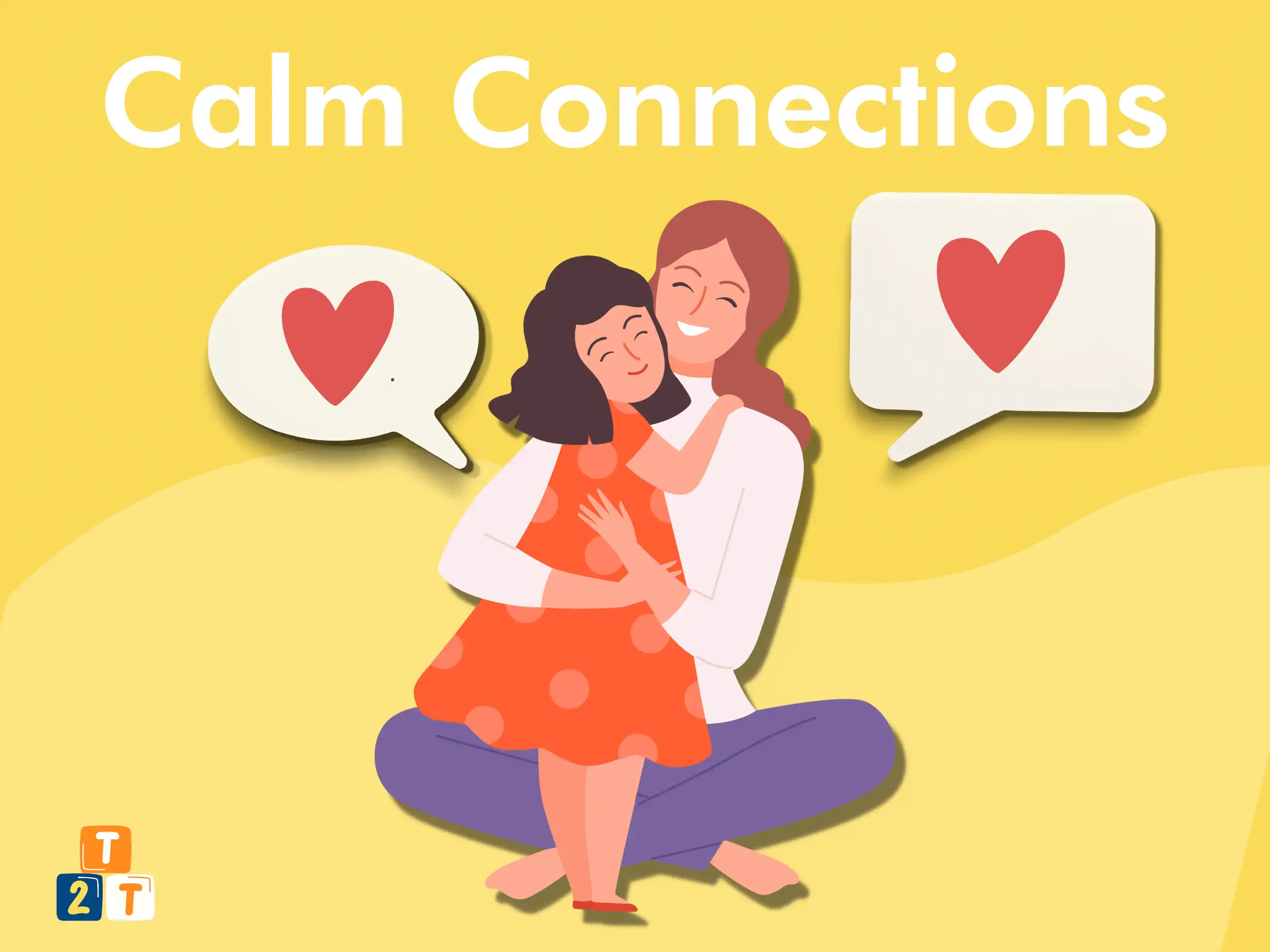Understanding the stages of language development is crucial for parents and caregivers to support a child’s growth and development. Therefore, it is essential to understand how language develops during this period to provide the necessary support and identify any potential areas of concern.
In this article, we will explore the different stages of language development over the first 5 years of life and the key milestones that occur during each stage.
Stages Of Language Development
Understanding the stages of speech and language development in children ages 0-5 will help you identify any potential issues and ensure that you are offering them the best possible options to thrive.
In nearly all cases, the stages of language acquisition follow a predictable sequence. This is what you can expect at different ages:
Language Development: Birth to 12 Months of Age
During the first year of life, your child goes through the pre-linguistic stage and achieves many important milestones in speech and language development.
At birth, babies can already distinguish between different sounds and voices. They will have been listening and learning your voice in the womb.
By 3 months, they will make facial expressions, start to coo, and make vowel sounds. They will turn towards your voice and become still while listening.
By 6 months, they begin to babble and make consonant sounds. They will be fascinated by toys and the sounds that they make too.
At around 12 months, your child may say their first words, such as “mama” or “dada”. They will also start to understand simple commands and use gestures to communicate, such as pointing to objects they want.
Language Development: 12 to 24 Months of Age
Between 12 and 24 months, your little one’s vocabulary will continue to grow rapidly throughout the holophrastic stage (one word at a time).
You will notice that they will start to use more complex sounds and may even start to put two words together to form simple sentences, such as “more milk.”, as they approach their 2nd birthday.
During this stage, it’s important to encourage your child’s communication. So talk your way through the day. What you find mundane they will find fascinating, read to them a lot and play with toys that promote language development.
Language Development: 24 to 36 Months of Age
Between 24 and 36 months of age, your little one’s language skills will become even more advanced.
They will start to use more intricate sentences and ask lots of questions, using the word “why?” a lot. They will also start to understand more abstract concepts, such as time and emotions.
During this telegraphic stage, it’s important to continue to encourage your child’s language development by having conversations with them and asking them questions.
You can also introduce flashcards and games to encourage your little ones to use words to describe their feelings, give simple instructions, and express what they want.
This is also a common age for toddlers to start to “ignore” you. To learn how to stop this behavior and help your toddler learn to listen to you properly, watch this video:
Language Development: 4-5 Years
Between 4 and 5 years old, children become more adept at using language to express their thoughts, feelings, and ideas. They use more complex sentences, including conjunctions such as “and” and “because,” and can create longer more detailed stories.
They also develop a better understanding of grammar rules and can use them more accurately in their speech. At this age, children also begin to understand more subtle aspects of language, such as sarcasm and humour.
They also become more adept at using language to negotiate and resolve conflicts with their peers.

Language Development And Play
As a parent or caregiver, you play a crucial role in your child’s language development and one of the most effective ways to help your little one develop their language skills is through play.
Play provides a fun and engaging way for children to learn and practice new vocabulary, sentence structures, and social skills.
During play, children are exposed to language and have the opportunity to engage in conversations, ask questions, and use language to express their thoughts and ideas.
Here are some ways you can incorporate language development into your child’s playtime:
- Narrate what you’re doing: As you play with your child, describe what you’re doing in simple language. For example, “I’m building a tower with red blocks. Look how high it is!” This helps your child learn new vocabulary, learn colors, and begin to understand sentence structures.
- Ask open-ended questions: Instead of asking yes or no questions, ask open-ended questions that encourage your child to use language to express their thoughts and ideas. For example, “What do you think will happen next?” or “How did you feel when that happened?”
- Encourage pretend play: Pretend play provides a great opportunity for children to use language to create imaginary scenarios. These play sessions can begin from a simple dress-up box to a complex mini-kitchen. Encourage your child to use language to describe the characters, settings, and actions in their play.
- Read books: Reading books with your little one is one of the best ways to expose them to new vocabulary and sentence structures for speech development. Encourage your child to ask questions and make predictions about the story. Discover my favorite book recommendations here.
- Sing songs and recite rhymes: Singing songs and reciting rhymes helps children develop their phonological awareness, which is an important skill for learning to read. Encourage your child to join in and sing along with you as often as you can.
Remember, language development is a gradual process that takes time and practice.
By incorporating language development into your child’s playtime, you’re providing them with a fun and engaging way to learn and practice their language skills.
TOP TIP: It is never too early to start talking to your little one. The sooner you start, the quicker your little one starts to pick up language skills.
How To Teach Your Child To Name Their Emotions
Language and emotional development are closely intertwined in young children. The ability to express oneself through language is critical to developing emotional intelligence and social skills.
Children who have difficulty with language development may struggle with identifying and expressing their emotions, which can lead to behavioral problems and difficulties in social situations.
Here are a few tips to help teach your child to name their emotions:
- Model emotional language: Children learn by example, so make sure you are modelling emotional language in your own interactions. Talk about your own feelings and use words to describe them in a calm way.
- Label emotions in books and movies: When reading books or watching movies with your child, point out the emotions the characters are feeling. Ask your child to identify the emotions and talk about why the character might be feeling that way.
- Play emotion games: Play games that involve identifying emotions, such as making faces or acting out different emotions. This can help your child learn to recognize and label different emotions. I personally love flash cards for these activities.
- Encourage emotional expression: Encourage your child to express their emotions in a healthy way. Let them know that it’s okay to feel sad, angry, or frustrated, and help them find ways to express those emotions in a positive way. This book will help you open the conversation at bedtime.
- Recognise their emotions: When dealing with your little one’s emotions acknowledge their feelings by saying things like “I know you are sad” or “I can see you are angry”. They will then have a word to associate with their feelings that they can use in the future.
What is it? This book contains 8 different plush toys each displaying a different emotion - Anger, Anxiety, Peaceful, Sadness, Happiness, Love, Confidence and Tangled (Scribble) - to help children identify and process their emotions.
Why do I like it? This is a very helpful tool to teach children about emotions and how to handle them. Its fun plush toys make learning about emotions manageable and approachable. The Little SPOT of Emotion book is also ideal for children with social-emotional needs.
By teaching your child to name their emotions, you are helping them develop the emotional intelligence they need to navigate the world around them.
Want to stop your children from yelling, shouting & throwing tantrums... Whilst helping them listen to you and building a healthy strong relationship? Look no further than Calm Connections and transform your family’s life for years to come.
- Understand the best way to communicate with your child in different situations, so you feel more confident, relaxed, and in control... even during the most challenging moments. 💖
- Learn how to set clear boundaries and engage your child's cooperation 🌟
- Break free from tantrum cycles and promote healthy alternatives (without using punishment) 🎉
- Learn my trade secrets (collected over 40+ years in the childcare industry) to get your child to listen to you without shouting 🙌
- Promote kindness and honesty to prioritize a respectful relationship with your child ❤️
Signs Of A Speech And Language Delay
While every child develops at their own pace, there are certain milestones that most children reach by a certain age.
If your child is not meeting these milestones, it may be a sign of a speech or language delay and it is important to seek help from a speech-language pathologist or your child’s doctor.
Early intervention is key to helping your child catch up and develop the communication skills they need to succeed.
Some signs that your child may be experiencing a speech or language delay include:
- Not babbling or making cooing sounds by 6 months
- Not responding to their name or other sounds by 9 months
- Not saying any words by 12 months
- Not using two-word phrases by 24 months
- Difficulty understanding or following simple directions
- Difficulty expressing themselves and making requests or commands
- Difficulty with pronunciation or using the correct words for objects or concepts
TOP TIP: Always remember that comprehension is key. If your little one is understanding everything you say and follows directions but is not ‘saying’ a lot there is usually little to worry about and they will speak in their own sweet time.
Types of Speech And Language Disorders
There are several types of speech and language disorders that can affect young children. These include:
- Expressive language disorder: difficulty expressing themselves through speech
- Receptive language disorder: difficulty understanding language
- Speech sound disorder: difficulty with pronunciation or using the correct sounds for words
- Stuttering: difficulty with the flow of speech
- Language delay: a delay in meeting speech and language milestones for their age
- Hearing loss: difficulty hearing sounds and speech
If you suspect that your child may have a speech or language disorder, it is important to consult with a medical professional. They can help identify the specific disorder and provide appropriate interventions to help your child develop their communication skills.
NOTE: Young children in bilingual or multilingual families will usually speak later than those who are only exposed to one native language. This is because their brains have a lot more to take on board. However, when they do start to speak they are amazingly adept at mixing the languages they have learnt.
Looking to get your little one to sleep quickly and effortlessly? Check out my Bedtime and Nap Cheat Sheet and master the art of making daytime naps and bedtimes as seamless as possible.
A bedtime & nap cheat sheet so good your little one will ask you to put them to bed...
Laura Williams "This is a life saver! I'm so glad I downloaded your bedtime & nap cheat sheet. My little one actually asked me to put him to bed last night! Unbelievable! Thank you so much!"
Click Here For The FREE Cheat Sheet
Frequently Asked Questions About The Stages Of Language Development
Looking for more information about the stages of language development? Here are the answers to the most commonly asked questions.
What Are The Stages Of Language Development In Infants?
Infants go through several stages of language acquisition, starting with the pre-linguistic stage of cooing and babbling at around 6 months old. By 12 months, they should be able to say a few words and understand simple commands.
At 18 months, they should be able to say around 20 words and use simple phrases. By 2 years old, they begin to enter the telegraphic stage and should be able to use 2-3 word sentences and understand simple questions.
How Does Language Development Progress In Toddlers?
Toddlers progress through language development by learning new sounds, words, and grammar rules. They also start to learn to use language to communicate their thoughts and feelings.
Better language development will most definitely result in fewer meltdowns and tantrums as being able to communicate their needs will mean your little one is frustrated less often.
What Are The Key Language Skills For 4 to 5-Year-Olds?
At 4-5 years old, children should have a vocabulary of several thousand words and be able to use complex sentences. They should be able to understand and follow multi-step instructions, answer questions about a story, and tell stories with a clear beginning, middle, and end. They should also be able to use language to negotiate and solve problems with peers.
How Does Language Development Differ Between 3 And 5-Year-Olds?
Between 3 and 5 years old, children’s language development progresses rapidly. At 3 years old, children should be able to use simple sentences and understand basic concepts like colours and shapes. By 5 years old, they should be able to use complex sentences and understand more abstract concepts like time and size.
What Are The Milestones Of Language Development In Preschoolers?
By the time your little one is of preschool age their language skills will have progressed to them using more complex sentences, understanding more abstract concepts, and having more advanced conversations. They also start to learn how to read and write.
Why Are Language And Speech Development Issues Most Apparent Between The Ages Of 3-4 Years Of Age?
Language and speech issues are most apparent between 3-4 years because many speech therapy practitioners will want to wait until this age to prescribe any action unless it has become very apparent earlier on that there is an issue.
As always if you have concerns about your child’s development, talk to a trusted medical practitioner or a speech-language pathologist.
The National Institute on Deafness and Other Communication Disorders provides more information on speech and language development milestones and disorders.
What Are The Typical Language Abilities Of 5 Year Olds?
At 5 years old, children should be able to use language to express their thoughts and feelings clearly. They should be able to tell stories with a clear beginning, middle, and end, and understand and follow complex instructions. They should also be able to use more complex grammar structures and problem-solve with their peers.
Need More Parenting Help?
- Download our FREE Perfect Sleep Cheat Sheet. It’s a free, easy-to-use and proven formula designed for parents of 0-5 year olds to master the art of consistently undisturbed and restful sleep without the yelling, nagging or exhausting long-winded evenings.
- Check out our Parenting Toolbox. You’ll get access to expertly-chosen products that you can guarantee are the best for your little one and your wallet.
- Ready to create the calm, peaceful evenings you deserve? Then checkout our most popular course - The Bedtime Battles Masterclass

A bedtime & nap cheat sheet so good your little one will ask you to put them to bed...
Laura Williams "This is a life saver! I'm so glad I downloaded your bedtime & nap cheat sheet. My little one actually asked me to put him to bed last night! Unbelievable! Thank you so much!"
Click Here For The FREE Cheat Sheet



